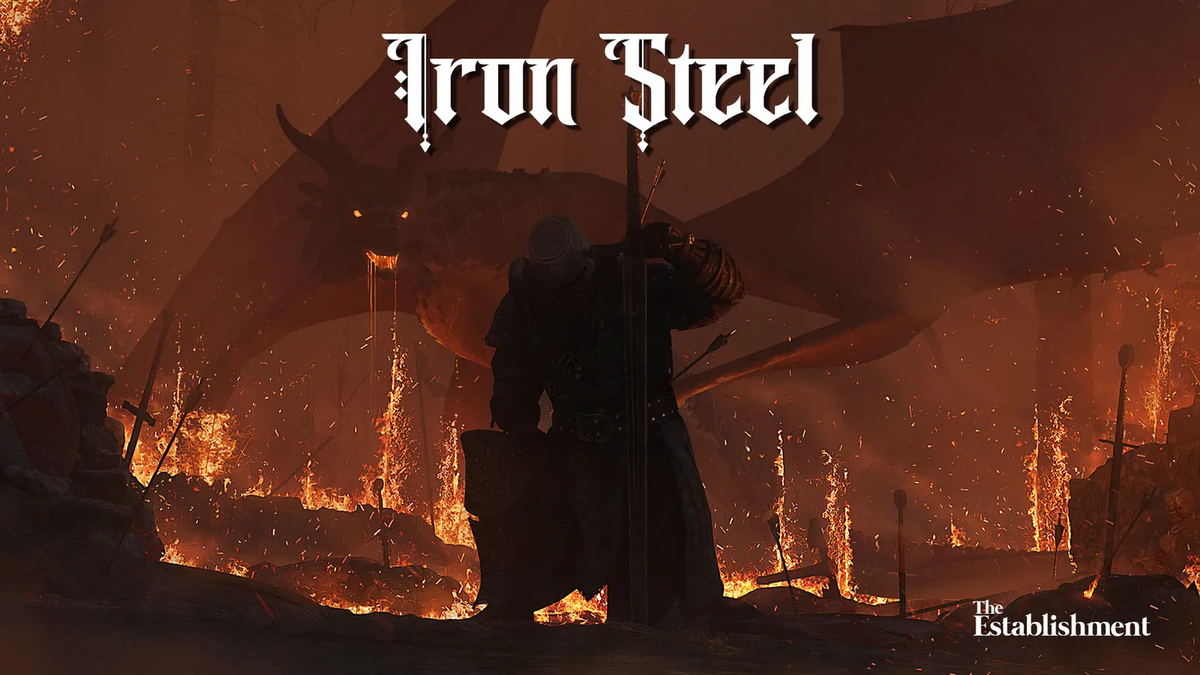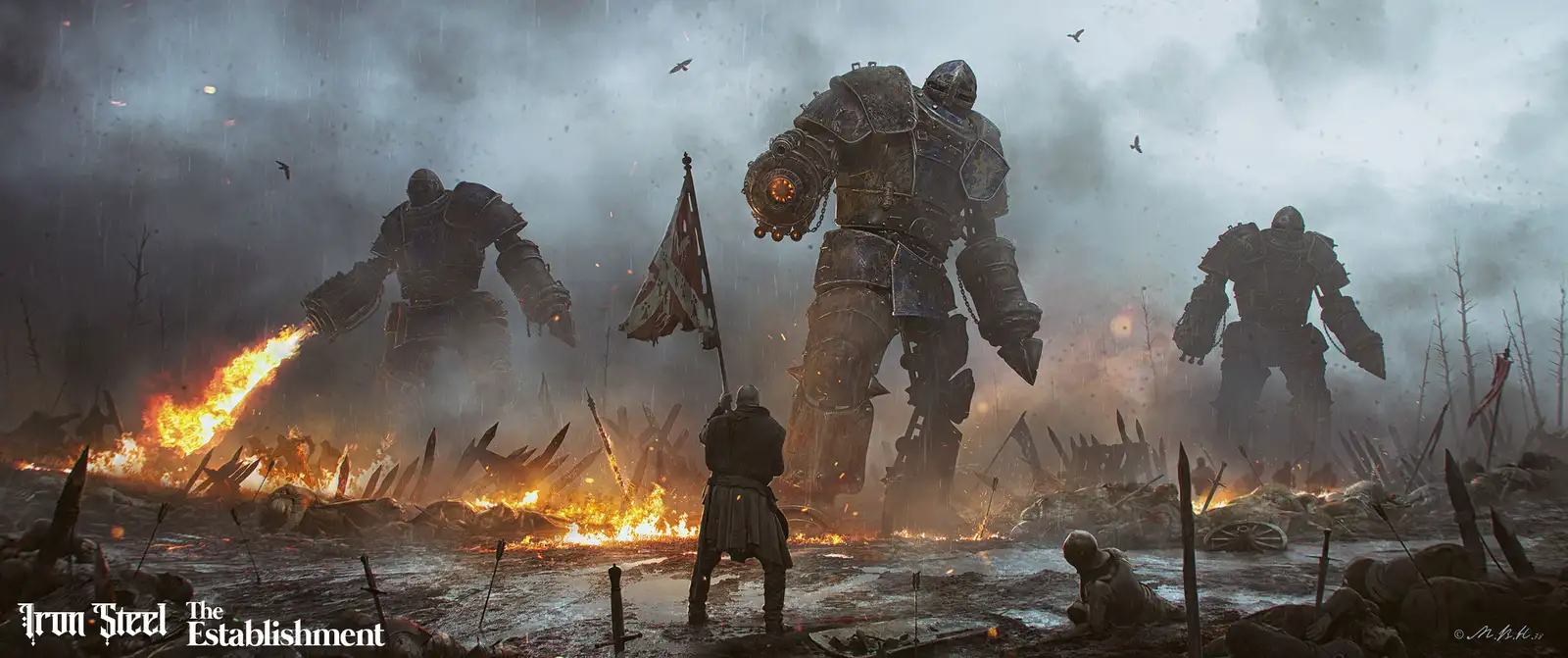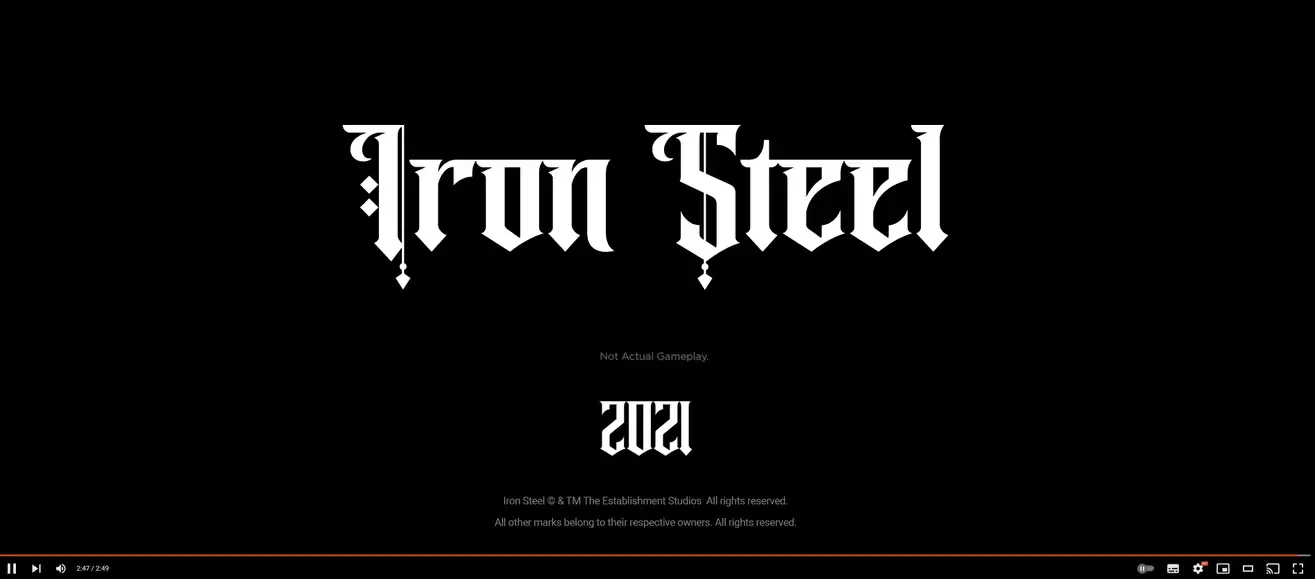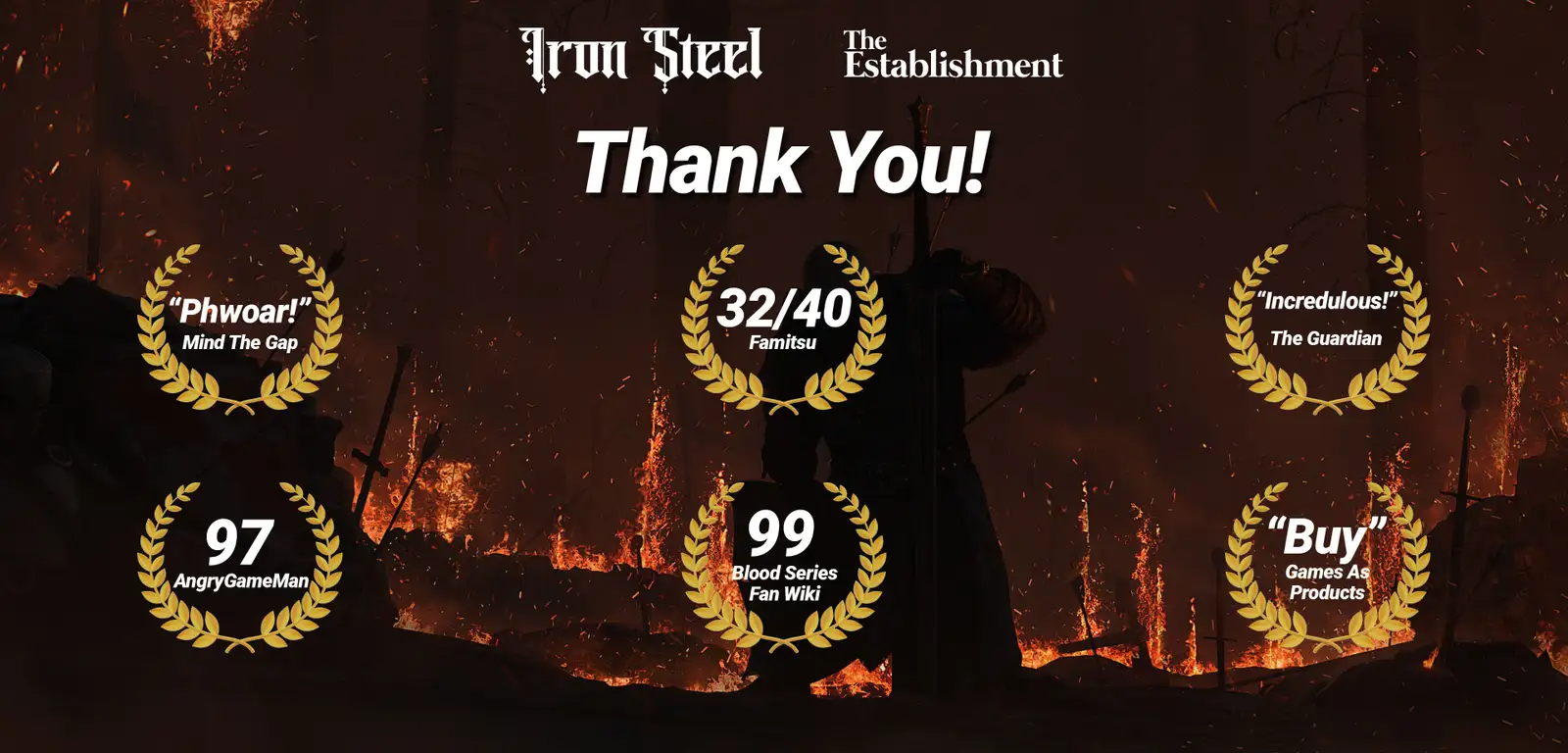The Story Of 2022's Biggest Video Game*

In 2015 mega-publisher Electronic Soft released the blockbuster game BloodDeath: DeathBlood, a sequel to 2009's wildly successful BloodDeath. It would mark the end of both the series and its development studio, but it is not the end of their story.
*Note: This is a sequel to a fictional story called, “How A Video Game Is Released In 2015.”
Some things in this industry are too big to fail, and so while the key figures responsible for the BloodDeath games would soon leave Electronic Soft, it wouldn’t be long until they were back in the headlines for all the right (and wrong) reasons. What follows is their story.
2016
APRIL: A number of senior developers responsible for the BloodDeath series announce that they have formed a new studio, The Establishment. They claim to have learned a number of valuable lessons from their time with Electronic Soft, with an expensive launch documentary proclaiming “we’re not here to make the same mistakes”. The team say their studio will be focused on quality, pride themselves on a lack of interference from an outside publisher, and most importantly will have a strong focus on positive working conditions, with a promise of “no crunch”.
The “About” page on The Establishment’s website shows the studio is initially comprised of 13 white men, all in their 40s.

AUGUST: The Establishment’s first game, KillBood, is announced on Kickstarter, with an initial goal of raising $2 million. Billed by the team as a spiritual successor to BloodDeath, within 23 minutes it has raised over $14 million. Promising an outrageously ambitious set of features, and an “evolving experience we alone are free to tell”, it looks to its millions of backers like the perfect video game.
NOVEMBER: Despite going on to raise over $30 million from fans, The Establishment announce they have signed a major publishing deal with AAAA Games, Electronic Soft’s main rival. It is not made clear what will happen to the crowd-funded money now that they have a partnership with a major global publisher, or what this means for a project that had been sold initially as an experiment free from publisher interference.
2017
MARCH: KillBlood’s Kickstarter page has been updated only once since the campaign’s launch almost a year ago, mentioning that “things are progressing well”, that the team is “actively hiring” for extra positions and that while it’s too early to show anything from the game, fans should rest assured that the project is “looking incredible”.
2018
FEBRUARY: KillBlood is cancelled, with all backers refunded their money. The Establishment simultaneously announce that they have begun work on a major new project with AAAA Games.
2019
JANUARY: Despite promising they had learned their lessons from Electronic Soft’s large and cumbersome studio model, The Establishment—initially based in Montreal—announce the opening of a second studio in Austin to assist in the development of their mystery, unannounced game. They also open a third, in Singapore, mostly for outsourcing work made under horrendous working conditions for rock-bottom prices, but don’t publicise that one as much.

DECEMBER: At The Game Awards, The Establishment steal the show with the announcement of Iron Steel, an action RPG billed as a “true spiritual successor” to BloodDeath, which will be published by AAAA Games. “We want to give fans of BloodDeath what they want”, a representative says on-stage, “and what they want is more BloodDeath”. After an explosive trailer, the crowd erupts. It instantly becomes the most-anticipated release of 2020.
Conceived and developed as a next-gen release (though also coming to PC), AAAA Games executives have insisted on a last-gen console release as well.
2020
March: With Iron Steel still early in development, a global pandemic hits. The Establishment’s offices in Montreal, Austin and Singapore are all closed, with developers sent home to spend the next 18 months working remotely. Having already failed to meet every internal milestone set by AAAA Games, it is estimated these fresh challenges will almost double the time required to finish the game, and result in years of disjointed development, culminating in repeated cycles of brutal crunch. The Establishment’s studio launch video, which proudly claimed “we’re not going to make the same mistakes”, is quietly removed from the company’s site.
May: AAAA Games executives, worried that the game doesn’t have a long-term plan to generate revenue beyond “selling copies”, meet with The Establishment’s management to ensure Iron Steel includes both a multiplayer battle royale mode (for which they can sell skins) and a loot box system (for legal and unregulated gambling).
June: With new, next-gen consoles only a few months away, Iron Steel is the star of a PlayStation 5 pre-release media event, and is surprisingly announced as a launch title by the AAAA Games marketing team. The game’s actual developers, meanwhile, know it is at least another 2-3 years away from being even remotely ready.

OCTOBER: Just weeks before the PlayStation 5 and Xbox Series X’s planned releases, it is unsurprisingly announced that Iron Steel has been delayed into 2021. After posting about the delay, The Establishment’s social media team is flooded with death threats, forcing them to temporarily lock their accounts.
2021
JANUARY: Two separate investigations by video game news websites accuse several senior employees of The Establishment of misconduct during their time at Electronic Soft. One resigns and a second is fired, the latter almost immediately launching a YouTube channel called “Tread On Me”, which covers everything from men’s rights to anti-vaccine tirades to 37-minute long critiques of women in superhero films.
MAY: An online showcase designed to give fans and media their first look at Iron Steel’s gameplay is impressive, but also raises a few questions, with concerns that new additions to the game—like only being able to get new helmets from “Loote Chests” and a bizarrely ill-fitting battle royale multiplayer mode—are diluting the DeathBlood experience. In a staged interview with an overly-enthusiastic content creator, a representative from The Establishment says Iron Steel will be out in time for the holiday season.
JULY: A short presentation of Iron Steel’s character creation suite is shown as part of a larger Xbox presentation, and immediately hits the headlines. It shows that of the 17 skin tones available to players 15 are white, with the other two being “black” and “green”. The single black character skin is locked to a poorly- modelled afro haircut.
NOVEMBER: Four weeks before the game’s planned launch, AAAA Games drop a press release at 11:59pm on a Friday night saying that the game has been delayed into “Early 2022". No reason is publicly given for the delay. Privately, The Establishment know that despite working around the clock, the game is still years away from being ready. To placate fans, a multiplayer beta is announced for January 2022.
DECEMBER: A surprise cinematic trailer for the game reveals a carefully guarded secret: unlike previous Blood games, which only featured a lone male protagonist (in this case Sir Henry Goreston), Iron Steel features a second playable character with her own unique storyline: Lady Rose. After posting some concept art of the new character to the company’s social media accounts, and mentioning how proud the team are to be able to expand the series like this, The Establishment’s community manager is subsequently harassed on Twitter by gamers, right-wing talk show hosts and two Republican congressmen who have never played a Blood game, but have nevertheless been briefed that this move is “woke”.
A week later, both Iron Steel characters are released as downloadable skins for Fortnite. Fans are starting to get excited.

2022
JANUARY: The battle royale multiplayer beta is a disaster. The game’s performance borders on unplayable. Maps are empty, weapons are unbalanced and new characters introduced for the mode prove wildly unpopular. Fans are vocal with their displeasure through official beta feedback channels, but also in wider online communities. The Establishment thank all players for their input, and promise to make necessary changes, knowing full well there isn’t any time or money left to change a thing.
MARCH: The first specific details of the game’s Loote Chest economy are released. AAAA Games has partnered with a blockchain marketplace to sell weapons and armour as NFTs, which the publisher says they’re doing after “listening to our fans”. They are met with an immediate firestorm of protest before backing out of the deal 24 hours later, saying their reversal was a result of “listening to our fans”.
APRIL: Iron Steel’s social media accounts joke that the game is “destined” for a final release date. It will be out in September. No more delays.
Investigating the game’s numerous delays, a report from a major news website accuses The Establishment’s management of cultivating a “culture of neglect”, with rampant crunch and staff turnover. Senior leadership deny these allegations strenuously, even when dozens more employees come forward throughout the month to support the claims in subsequent stories.
AUGUST: By every internal metric Iron Steel is nowhere near being ready, but it doesn’t matter. AAAA Games leadership, desperate for a boost to their annual profits, have by now decided that the game is finally “finished”. The world’s largest video game website receives a copy of the game four weeks ahead of release, for which they run a preview, a second preview and then an early review. Other websites and popular streamers receive code two weeks before release. The websites investigating The Establishment’s staffing and misconduct allegations do not receive copies.
SEPTEMBER: The game is released, and on the strength of its trailers and marketing has already sold millions of copies from preorders alone. It quickly sells millions more. Iron Steel receives mixed reviews from major outlets, however, with some sites praising its ambition and drive to expand on the now-tired BloodDeath formula with Lady Rose’s new mechanics and alternate storyline. Most are highly critical of its practically unfinished state, however, citing hollow sound effects, disjointed cutscenes and half-implemented features. Performance is also an issue for many, with the PC version crippled by bugs and the last-gen console editions hovering between 9-18fps.
The one thing everyone agrees on, though, is that the multiplayer mode is a waste of time.

SEPTEMBER: In some good news for over-worked developers at The Establishment, despite its overall mixed reception Iron Steel easily hits the Metacritic bonus threshold outlined in their contracts. With most major websites critical of the game having dropped review scores entirely, it’s left to outlets like “GamerSnatch” (97/100) and “SEO Bandits” (99/100) to pad the average and bring in bonus cheques for the creators of the game.
A mobile spin-off is released. It contains all of the main game’s Loote Chests, and almost none of its gameplay.
OCTOBER: A series of urgent patches fail to fix the game’s performance issues on console. They do, however, manage to introduce a stricter and more expensive economy for the game’s reworked Loote Chests.
Despite growing discontent among fans—with the game’s Steam reviews in particular having been bombed to hell and back thanks to its various performance woes— Iron Steel has now sold so many copies that it has become the most successful launch in AAAA Games history.
NOVEMBER: An internal, post-release review conducted by The Establishment finds that the global pandemic had a monumental effect on Iron Steel’s development. The disruptions it caused to workflow, planning, communication and testing were unprecedented, and were identified as being the main culprits for most if not all of the game’s major shortcomings. Allegations of a “culture of neglect” are not mentioned. None of this, or the pressures placed on the team by AAAA Games management, is ever communicated to the public, who continue to attack the “lazy” developers for their “stupid mistakes”.
Reviews on Glassdoor from a rapidly-growing number of former employees begin to reveal the scale of the game’s troubled development, making public the endless cycles of crunch brought on by publisher insistence and poor studio management.
DECEMBER: Continued strong sales mean Iron Steel is now the most successful game in AAAA Games history, bringing in millions for the publisher’s shareholders and executives. It has, however, failed to meet internal sales targets. Tentative plans for a sequel—AAAA Games own the Iron Steel IP, of course—are thus cancelled, leaving The Establishment free to pursue a new publishing deal.
They are courted by Tencent, Amazon, Google and former publishers Electronic Soft. Faced with this uncertain and internally unpopular future, many senior developers quit to form a new company, promising in a launch blog that “we’re not here to make the same mistakes”...
This piece was originally published on Kotaku in June 2022

